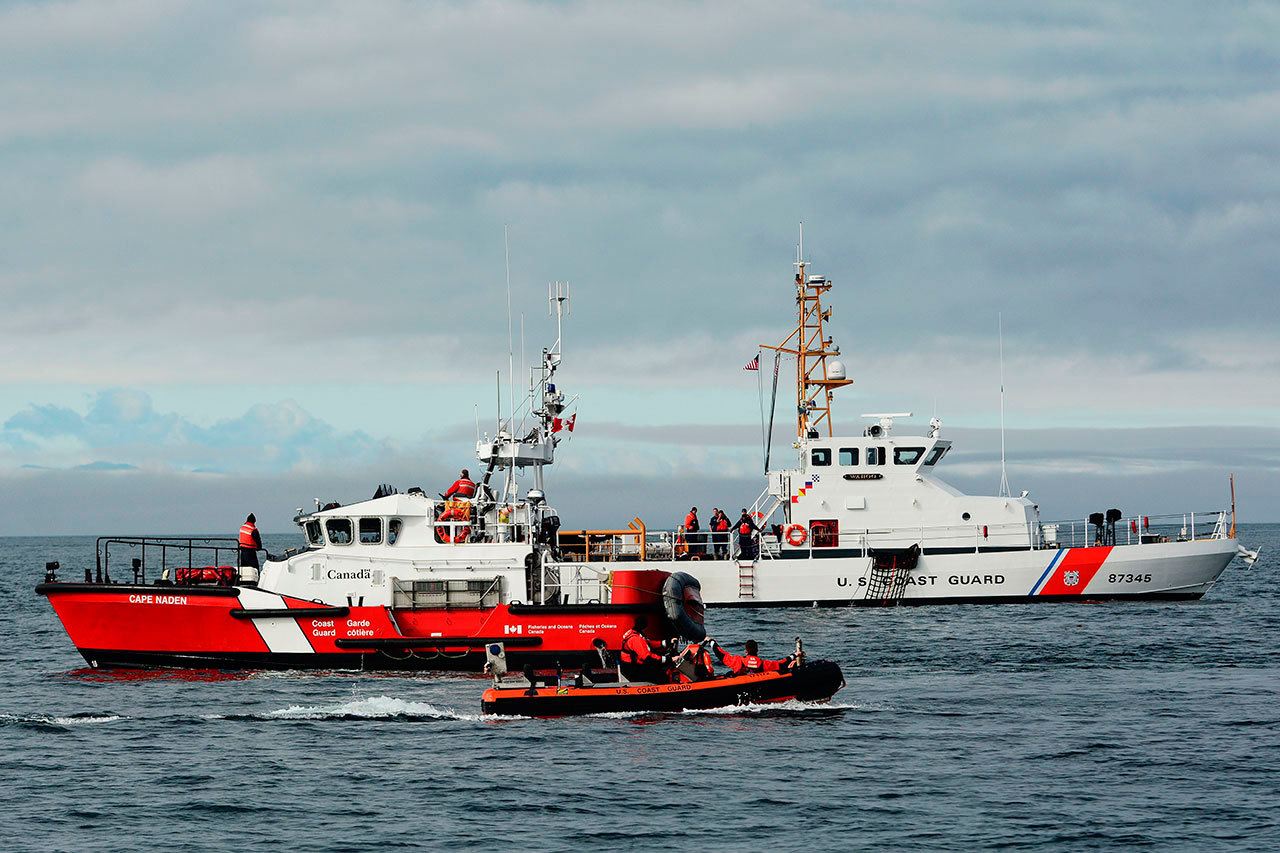PORT ANGELES — The international mass-rescue drill in the Strait of Juan de Fuca highlighted for local, state, federal and Canadian agencies what they already do well and what needs improvement.
The drill — which presented a scenario of some 60 people in the Strait of Juan de Fuca after a maritime disaster — tested some 14 agencies’ abilities in accountability and communication and challenged their processes and procedures, said U.S. Coast Guard Lt. Dana Warr of the 13th District external affairs department.
Officials are still putting together an after-action report, but they already are discussing the possibility of updating the Coast Guard’s processes and procedures, he said.
What became evident was that the agencies have different terms and acronyms to describe different things, he said, echoing what Brian King, Clallam County sheriff’s chief criminal deputy, said Tuesday.
“The language, simple things, forms and acronyms and how we say all those, was a little different from one agency to another,” Warr said.
A result of the exercise could be getting various agencies on the same page so the players involved know what other agencies are referring to, he said.
The Coast Guard worked with several local agencies — including law enforcement, firefighters and paramedics — as well as Canadian first responders to simulate rescuing 60 people from the Strait after a maritime disaster about 6 miles north of Port Angeles.
Among the agencies involved in the drill were the Canadian Coast Guard and Joint Rescue Coordination Center Victoria.
From this side of the border were U.S. Coast Guard, U.S. Customs and Border Protection, Clallam County Emergency Management, Clallam County Fire District No. 2, Clallam County Sheriff’s Office, Port Angeles Police Department, Port Angeles Fire Department, Olympic Medical Center, Olympic Ambulance, Lower Elwha Klallam Tribe, Arrow Marine Group, Puget Sound Pilots and American Red Cross and Clallam County Community Emergency Response Teams.
For Clallam County Fire District No. 2, the drill was also a test of its communications system, said Fire Chief Sam Phillips.
What became evident — though responders already knew it going in — was the district’s communications system needs to be upgraded and modernized, he said.
“That’s not something the fire district can do by ourselves,” he said. “We’ll have to take a regional approach if that’s to happen.”
He said the district was impressed with the Coast Guard’s ability to triage the patients at the Air Station on Ediz Hook.
Patients were assigned certain colors, depending on the extent of their injuries, so paramedics could care for the most seriously injured victims first.
The drill also gave the firefighters exposure to working in a larger operation, which included local, state and federal agencies.
While all drills will have some artificiality, just how realistic this drill was helped, Warr said.
As the drill started, a fog bank filled the Strait, making it difficult for crews to actually spot the victims.
Many of the agencies involved didn’t know exactly what their role in the drill was going to be either, he said.
“To be able to plan something and surprise the responders is always a good thing,” he said. “It gives a more natural reaction to an emergency and allows us to learn more.”
________
Reporter Jesse Major can be reached at 360-452-2345, ext. 56250, or at jmajor@peninsuladailynews.com.

